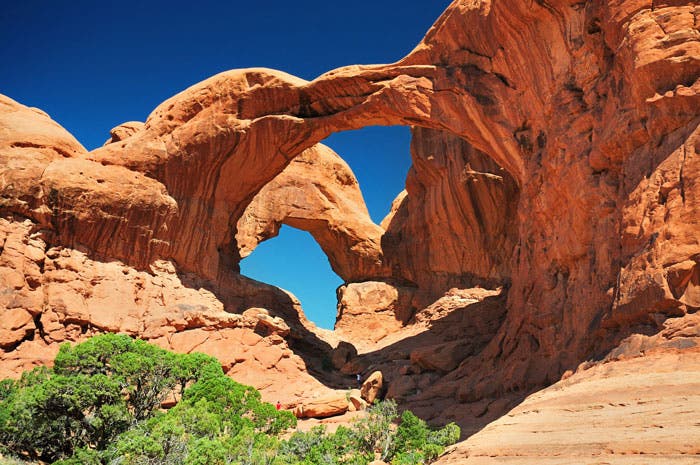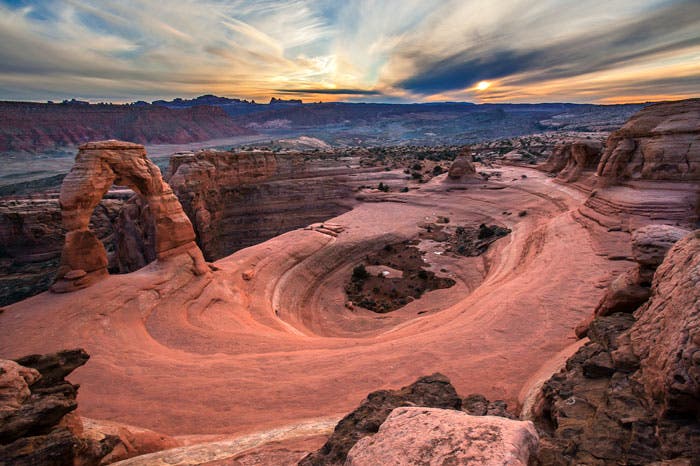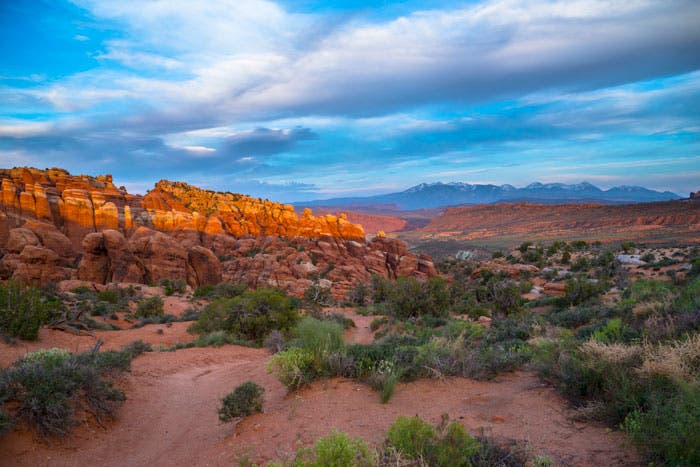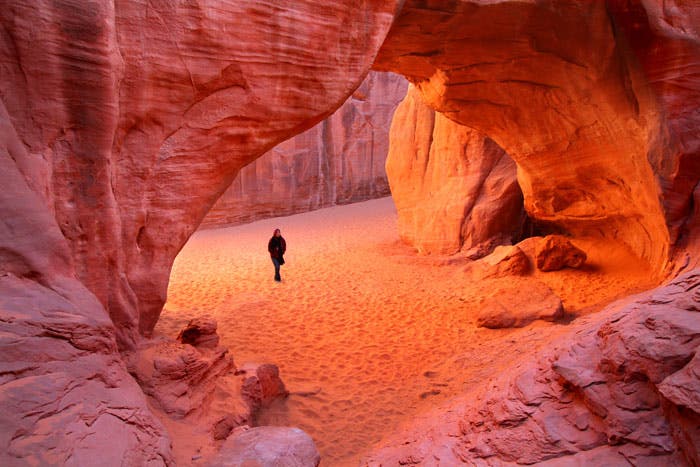5 Stops on Arches National Park's Scenic Drive

'Steve Greenwood'
Here are five awe-inspiring formations in Arches National Park that can be seen from the road or after a short stroll. Plus, get your car ready for a road trip with tips.
1. Park Avenue

After stopping at Arches National Park visitor center, you’ll drive up steep switchbacks on a paved park road. At the top, the Park Avenue and Courthouse Towers area is the first you’ll reach. Park Avenue Trail is the most popular hike in the park because of its ease and scenery. However, many visitors stop at the Park Avenue Viewpoint, snap a few pictures, and return to their cars without really exploring this amazing trail along a dry wash bed between enormous towering walls of red sandstone. The trail is about 1 mile long.
2 Double Arch

See this rare sight where two giant arches share the same foundation. The taller of the two arches is the tallest in the park at 112 feet high. To see this unique sight, take your first right after Balanced Rock to the Windows area of the park. It has the highest concentration of natural arches in the world. Park in the Double Arch Parking Area and walk the easy short .5 mile, round-trip hiking trail. It leaves directly from the parking lot and is relatively flat and gravel-surfaced.
3. Delicate Arch


You’ve likely seen photos of this dramatic, 65-foot-tall rock arch already — now check out the real thing. Short option: Park at the Delicate Arch Parking Area and take the short trail to a long-distance look at the Lower Delicate Arch Viewpoint. Longer option: Hike the 3-mile (round-trip) trail from Wolfe Ranch to see it up-close. Either way, get here really early in the morning or during the evening to beat the heat and the crowds. Parking can be really difficult if you arrive when everyone else does.
4. Fiery Furnace

This wild, trail-less zone encompasses giant boulders, narrow squeezes, and sheer rock cliffs. To explore it, pick up a permit at a park visitor center or join a ranger-led tour (the best option for beginners.)
No time for a hike? The short trail to Fiery Furnace Viewpoint is only .2-miles from the parking lot with only three feet in elevation gain, making it accessible for everyone. Take a slow walk so you can appreciate the abundant wildflowers along the trail.
5. Sand Dune Arch

Located near Devils Garden Campground, make your way from the Broken Arch Trailhead for .2-miles to this rare shady area of Arches National Park. You’ll enter a narrow area where sandstone fins have created a slot canyon. Follow the sand-covered floor to a natural arch cut into the side of the canyon wall. This is a welcome retreat on a sunny day – take off your shoes. It’s great fun for children to play in the sand or climb on the rocks.
Four Road Trip Tips
1. Check Your Battery
Before your road trip, check your battery’s charge. Heat saps its strength, so make sure you have a full charge, especially driving through Arches National Park.
2. Inflate Your Tires
Avoid a tire blowout or wasting gas mileage by inflating each tire to your car’s recommended tire pressure. That number is usually located in your car’s owner’s manual or on a sticker inside your passenger door.
3. Examine Your Treads
Stick a penny in a tire tread with Lincoln’s head upside down. If you can see his whole head, you need new tires. The shallower the tread, the less responsive your tires are to wet, snowy or icy conditions.
4. Have a Spare
Pack a spare and make sure it’s properly inflated and has solid tread depth.